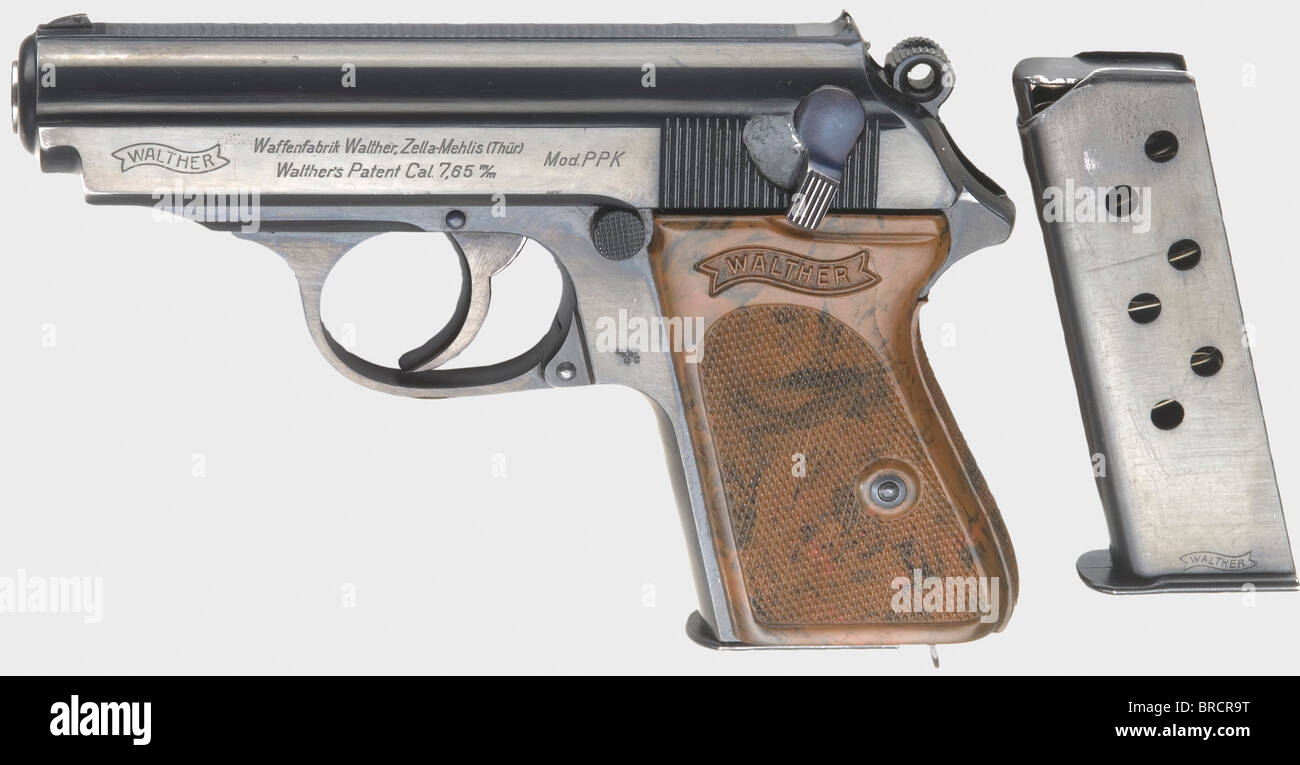
The magazines areĮngraved with the caliber on the bottom left and the Walther-Banner on the right side. Five holes allow a visual check of the number of cartridges in the magazine. 25 ACP, hold sixĬartridges and have a black plastic finger rest to support the ring finger and the pinky. On the bottom of the left grip is the inscription “Made in Germany”. The two-piece black plastic grips haveĪ fine checkering with the Walther-banner inside. On both sides of the slide the gun has 17 trianguar-cut serrations. White markings which enable the shooter to align them quickly and accurately. The sights are close to those of a modern competition pistol, with a wide rear gap, a wide front sight and On late models the number was changed to a The barrel has a final nitro proof mark, antlers, as the symbol of the Ulm proof house, and the year of proof as a two digit number. 25 ACP model with the proof mark on the left side-the only one I haveĮver seen. The late TPH the trigger guard can only be pulled downward when there is no magazine in the gun.Īll models have a German nitro proof mark, usually on the right rear side behind the serrations. In March 1986 (starting at SN 295730) there was a change of the magazine release lever which now has an additional pin. Were improved with mounting kit “Einlage TPH 222 46 07”. 1970 (starting at SN 252300) the trigger pawl and release lever were changed.
#Look up walther gun history by serial number serial number
Late models have the serial number under the ejection window.īesides the inscription and position of the serial number, the TPH was changed three times. Then somewhere between inġ9, around serial number 260.000, the serial number was moved to the right side of the slide near the muzzle. On early models the serial number is located on the right side of the frame behind the trigger guard. The TPH variants differ in the position of the serial number. 22 versions of which the earliest has SN 296522. 25 ACP with the short inscription (SN 299.409). I was able to confirm only one pistol in. Late models have a simplified, single-spaced inscription on the left side of the frame: Models up to approximately serial number 300.000 have a double-spaced inscription in sans-serif characters: Two different types of inscriptions on the left side of the slide are known. So the trigger can be pulled without cocking the hammer. But there are some slight differences: The safety arbor of the TPH pushes the release lever (15) downward and so disengages the trigger This is the safety mechanism we find in the Walther PP and PPK which was patented by Walther on 7th The gun should fall down on the hammer the impulse can not reach the striker (54). In the safe position the safety lever covers the red mark and the hammer (30) rests on the safety arbor. The safety mechanism is particularly worth taking a closer look at it (see Fig. It has a 60-degree turn similar to the late PPK models, with down as the safe position and up as the firing position simultaneously showing a red mark. There is a break-trough on the left side of the slide where the safety lever, which One-piece firing pin and the striker spring protrude through the safety arbor and are hold in position by it.

The ejector is positioned on the left side of the breech block behind the magazine well and the connector runs externally on the right side of the frame, beneath the right grip plate. The extractor is a L- shaped piece of steel which is spring supported and positioned in a groove on the right side of the frame beside the striker. Unlike the Walther TP, with its open-top slide, the TPH has an enclosed breech with an ejection Spring is assembled around the barrel and is retained and compressed by the slide such that no bushing is necessary. The barrel is fixed to the frame and fits tightly in the slide so that no bushing is needed. The TPH is blow-back operated and does not have a breech locking system. The pistol was packaged in a brown box which included a manual, a cleaning rod and a certificate with a 5-round shot group. Analogous to its sister TP, the TPH was built in caliber. Walther’s production of the new Taschenpistole mit Hahn (TPH, vest pocket pistol with hammer) started in July 1969, parallel to the Walther TP. 2: Patent drawing of the PPK safety arbor 1: Disengaged trigger pawl and trigger barįig.


 0 kommentar(er)
0 kommentar(er)
